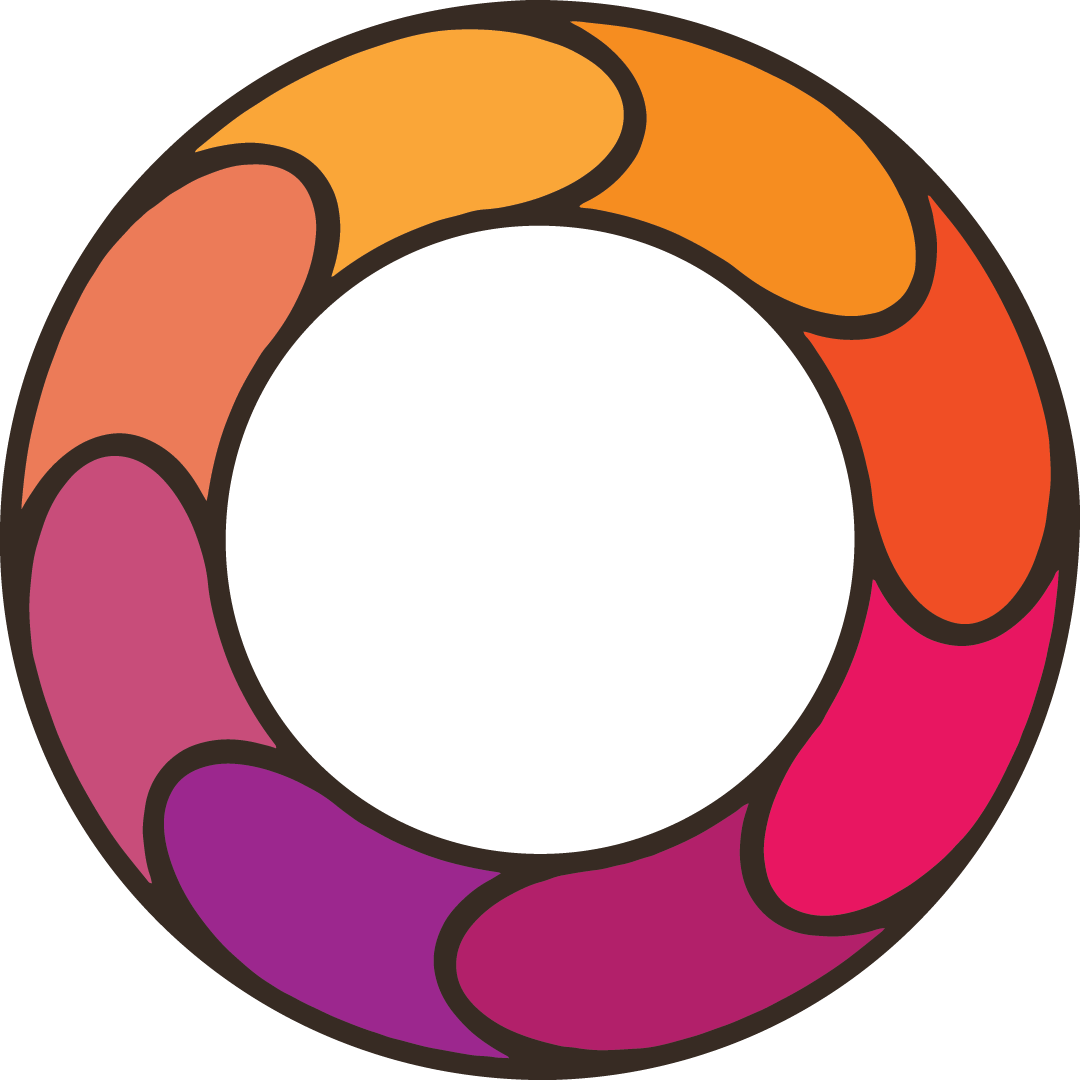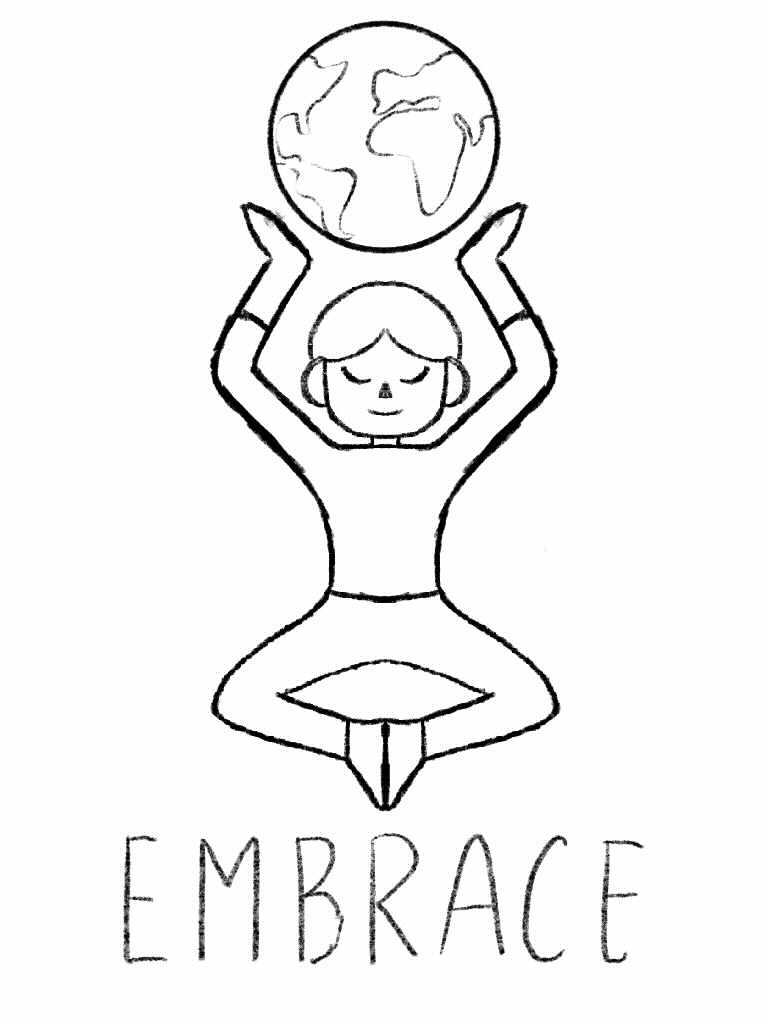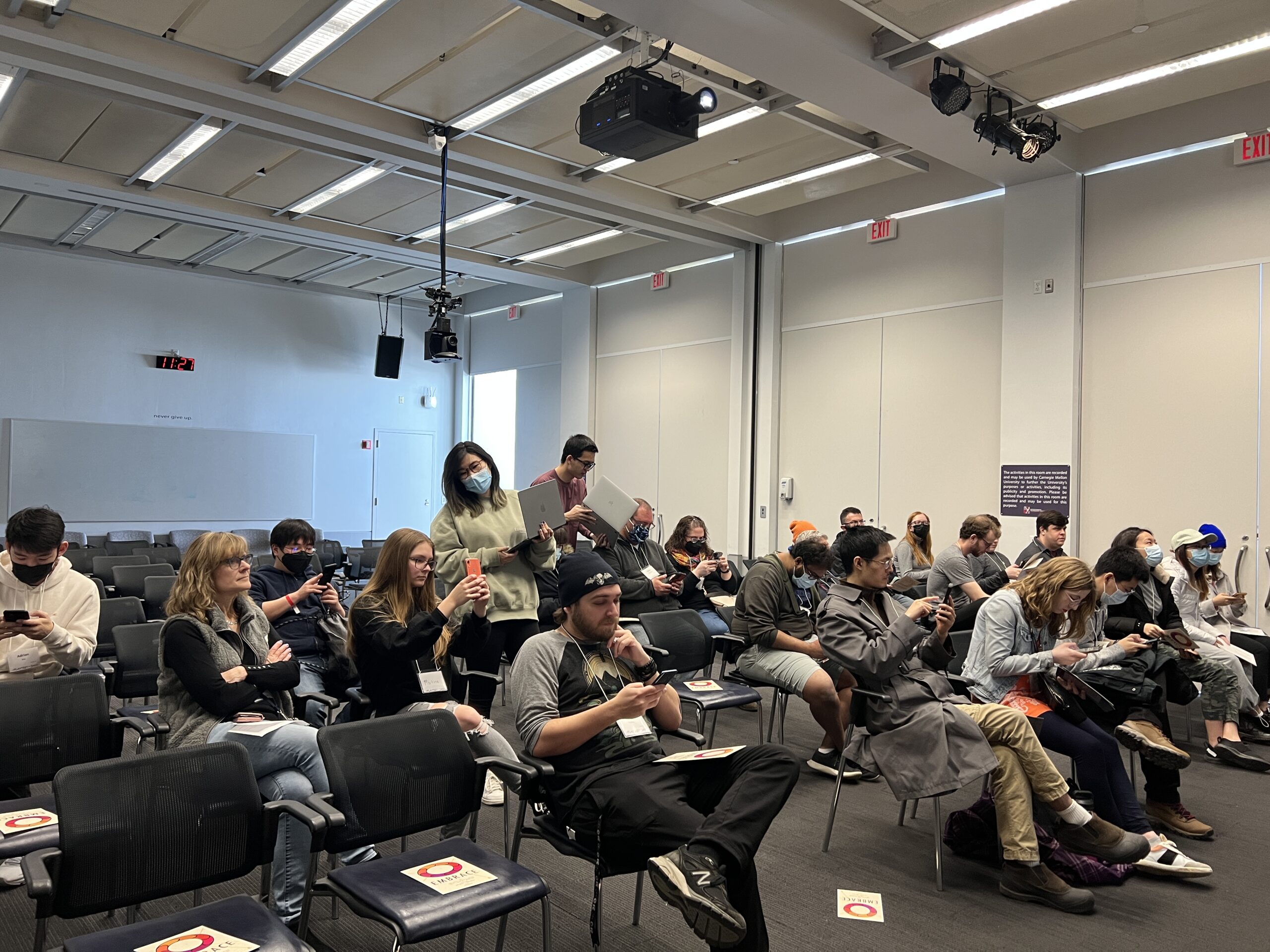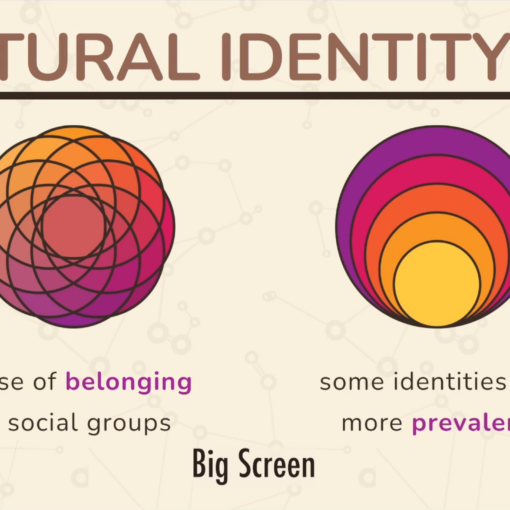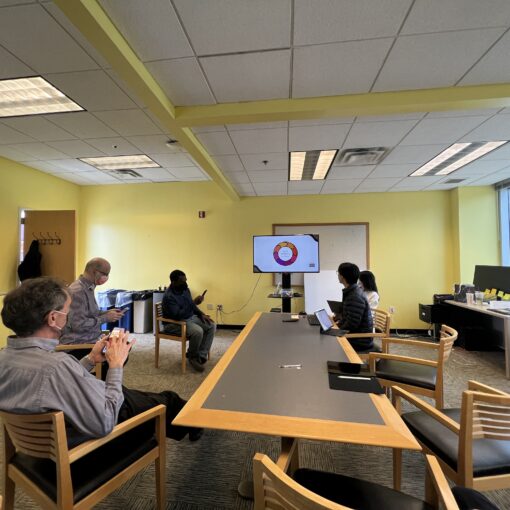Summary:
This week (Jan.24-30), we continued to research the topic of cultural humility and similar past projects. Our first client meeting was held with a lot of needs and expectations explained. Two workshops on project design helped us to think through our goal and potential experience design. In addition, our logo and icon were created and sent out.
What we have done:
Instructor Meeting (Jan.24)
More resources were recommended by Ralph and Mike.
- Sabrina Culyba’s Transformational Framework
- Games for Change
- Injustice
- Prism
- Kaleidoscope
Client Meeting (Jan.24)
This and every following Monday, we would have our weekly meeting with our instructors and client back to back. On Jan.24, a list of questions was put together for our first client meeting (plus follow up questions and answers) with Ayana:
- What is cultural humility?
- The three guiding principles towards cultural humility are: 1)Evaluating and acknowledging the limitations of our own cultural limitations and perspectives. 2)Recognizing and changing power imbalances where none ought to exist. 3)Accepting that developing cultural understanding is a lifelong commitment to self-evaluation and self-critique
- Who is this topic for?
- Primary audience is incoming freshmen to Dietrich School
- Secondary audience – all undergrad and graduate students
- Even staff and faculty could be scoped in later
- Should we talk specifically about CMU or generally?
- CMU
- Why is this important?
- The concept has become increasingly important for those who work in universities to help students become more self-reflexive about how their beliefs, norms, and habits color their thought processes and communication with other people – in terms of race, ethnicity, gender, religion, sexual orientation, socioeconomic status, or geographic location – in any cultural context and in any part of the world.
- How will this project deliverable be used?
- All future orientation sessions for incoming students to the Dietrich School
- What’s the expected goal of the experience?
- Increase the awareness of cultural humility
- Increase empathy to different people
- Be positive starting a college life enjoying diverse cultures
- What’s the demographic of the target audience?
- (To be researched later)
- What is the expected delivery method in the orientation session?
- Live orientation session where 300-400 students gather together and sit through the experience, before breaking up into round tables for further discussion.
- If students cannot attend in person, online experience should also be available to complete later on their own.
- How long is the experience expected to be?
- Around 15 minutes of the experience out of an 1.5 hour session
- How is the receiving of the orientation now?
- Okay but could be more interesting and engaging
- Should the project be a general introduction to cultural humility, or should we pick one or more aspects of identity to focus on?
- TBD
- Any preferred platforms or genres?
- Specifically denied VR/AR but open to others
- Do you people learn more from professionals talking about it or engaging themselves?
- We need a balance between these because even though they hear about others experiences, what is their role in this journey? How does others’ experience surprise or move you? They should have opportunities to tell their own stories
Some additional notes taken from Ayana’s words include
- We do not want to overwhelm first-year students as the orientation week is packed with different sessions. We want to make something educational but entertaining at the same time. We want something more than definitions and engaging students to learn something new. The project deliverable should be a trigger to thoughts and it is not just a standalone 1.5 hour experience. During the time we cannot teach them everything but we can get people excited about the topic and continue to learn outside the classroom.
- To check whether students have learnt from and utilized the experience, we could check in before and after some time on campus.
Workshops (Jan.26 and Jan.28)
On Wednesday, Jan.26, a workshop on Playtest to Explore/Brainstorming was held where each group organized their initial information on project inspiration, experience design, and client’s needs. We rotated among all the groups, gave tips, raised questions, and received feedback through digital sticky notes. Later that day, we organized the sticky notes into categories and discussed possible solutions via another zoom meeting.
Note: The answers were given in the context of making an interactive film and an online group sharing space. It may not be the final design as we are having some alternative experience designs by the end of week 2.
- How to scope for 300-400 people to make it approachable and keep them engaged during the session?
- First, form groups of around 5 ppl and play the interactive film within the group. People would vote on choices and discuss why they choose these. Second, after all students complete the film, they would get a group assessment, like Kahoot!, where they click options on their phone and see the answers/statistics on the big screen. Questions could be like trivia night questions. Finally, we can open up a public online posting space for students to share their stories
- How to make bonding with fellow freshmen more effective during this session?
- During the group play-together, it’s also ice-breaking time
- Possibly mix and match different groups
- Reach out to seniors in high school and freshmen in college to see how they want to do it
- Why did we choose interactive video?
- Because we don’t have enough artists based on the first role check-in. However, this could be wrong if people are willing to switch roles.
- How to assess it when they get the idea of cultural humility? What will be the ah-ha moment?
- Surveys and quizzes as described above.
- How to live stream?
- If in-person, live stream would be through projectors on the big screen. If online, it could be conducted over Zoom Seminar.
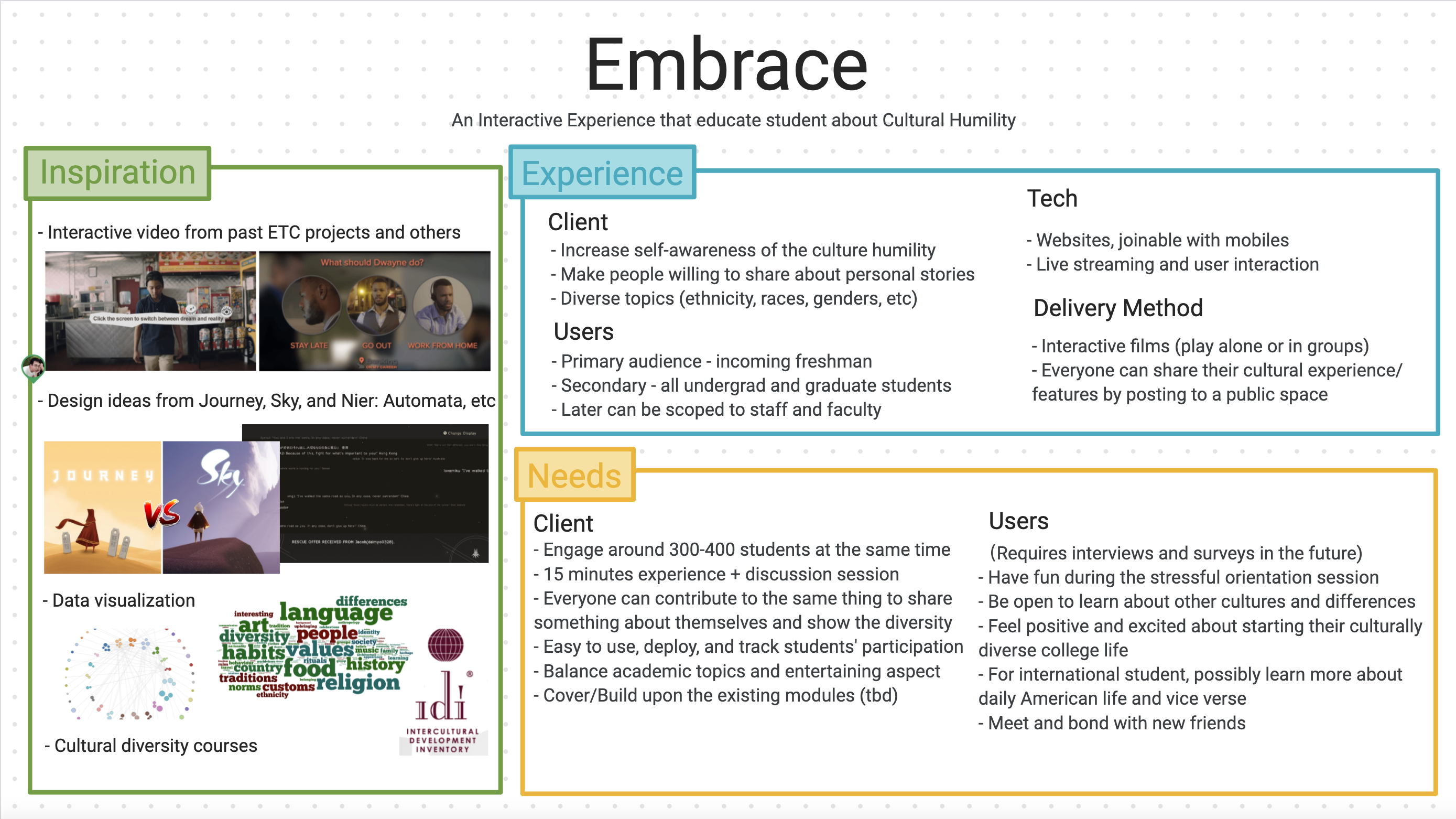
Embrace Composition Box 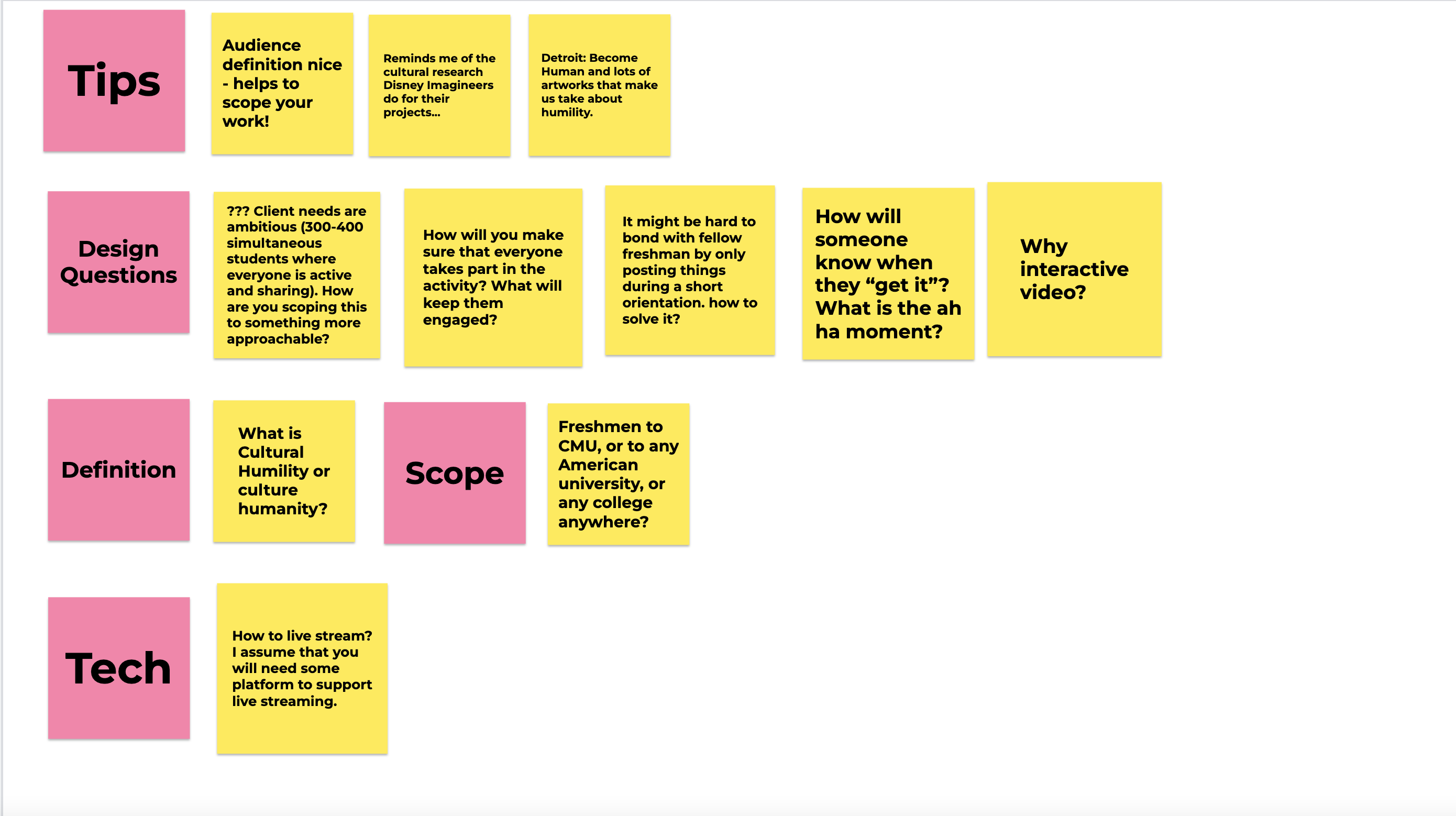
Reviews on our Composition Box
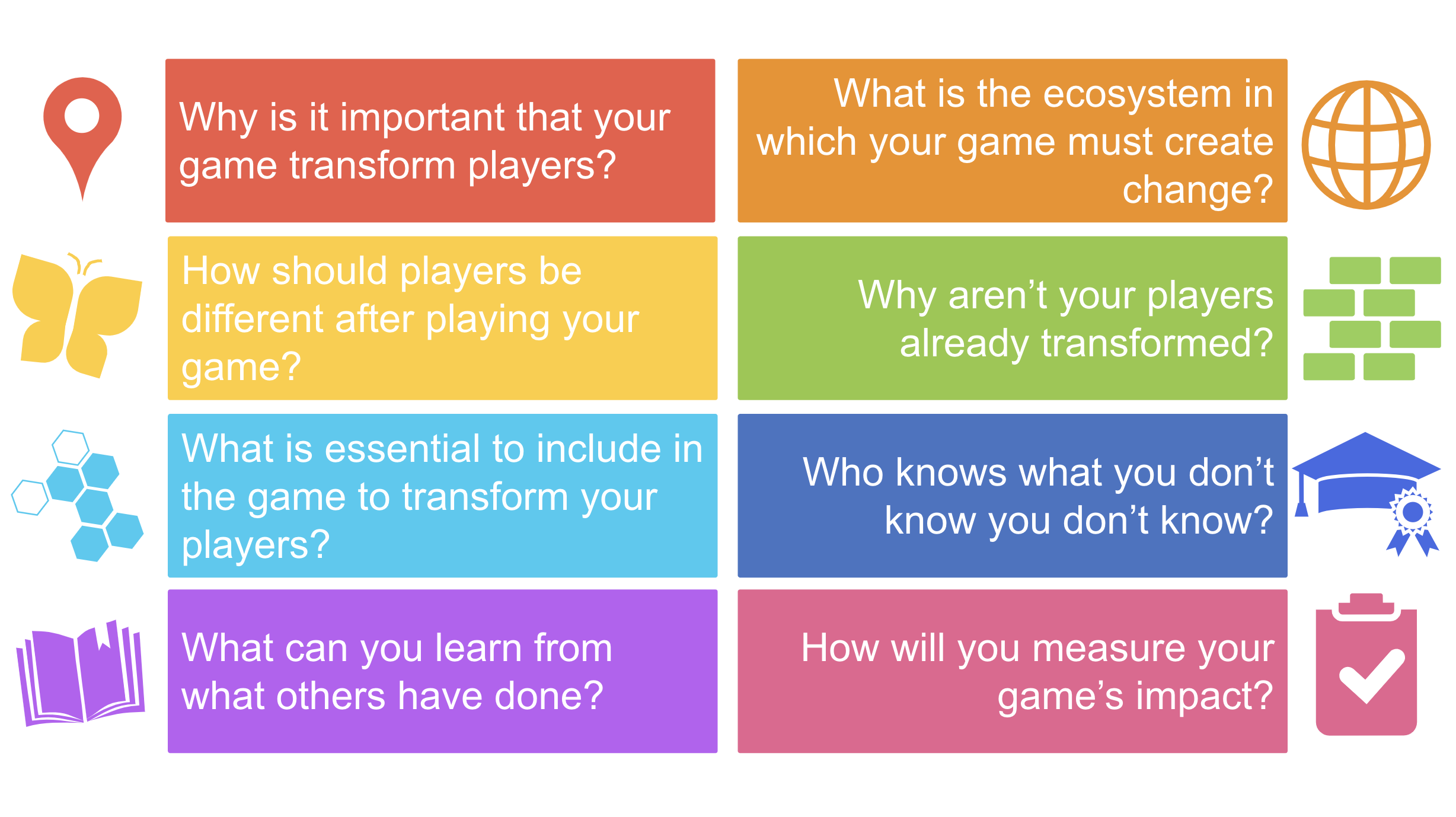
On Friday, Jan.28, an optional Transformational Framework Design workshop was held and three members of the team (Alexa, Jeffrey, and Shan) attended. During the session, we were able to think over some questions again like “What is your client hoping to achieve through your project?” and “Who is your audience and what is their initial state?” to confirm our answers. Most importantly, we came up with a draft survey for play-testing, which would help in the initial game design as well. The questions include:

We also identified our core player transformations based on the ten given factors.
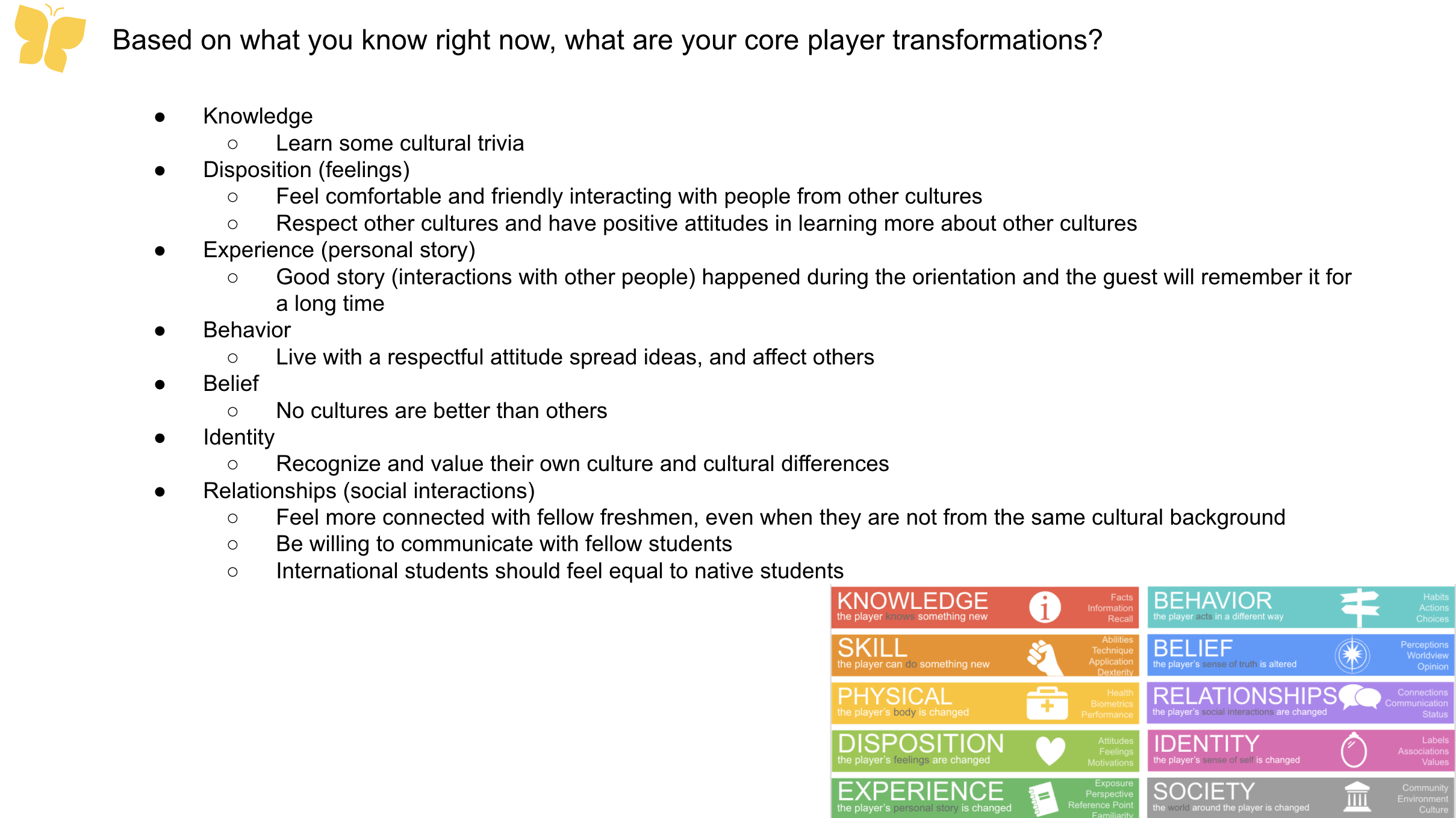
However, while considering what barriers are preventing our audience from transforming already, we highlighted these factors:
- May not have a chance to people from different cultures, depending on neighborhood, school, and parenting
- May not be willing to meet/make friends with people from different cultures because of whatever reason
- May not even realize they don’t know anyone from different cultures
- Do not know how/where to meet people from different cultures
Logo
Apart from meetings and workshops, our logo and icon were created by Amber by the end of the week. The logo was iterated five times over a teamwide discussion and reviewed by Shirley Yee.
What we plan to do:
Since the ¼ walkaround is coming up in Week 3, we are planning to make a presentation slide with all the information we have now and a few potential game designs for review. These will be included in next week’s production blog.
